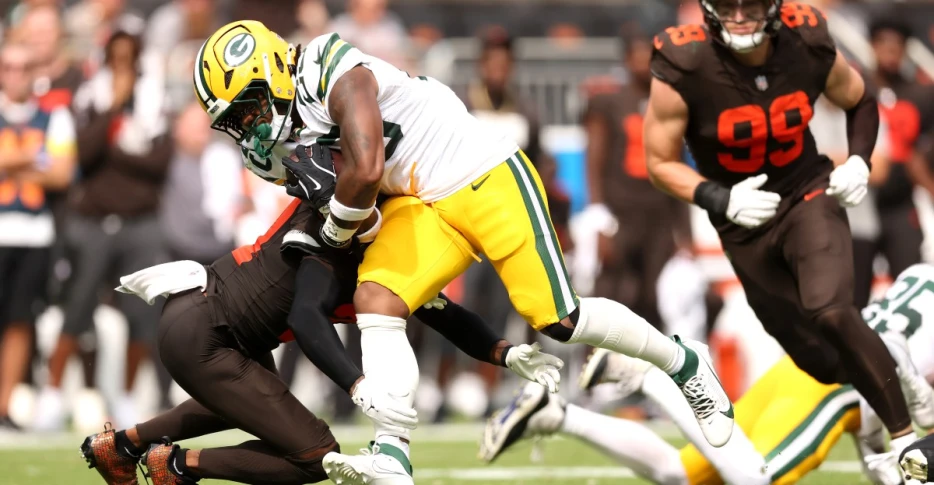
 Acme Packing Company
Acme Packing Company
It’s very difficult to separate the impact of an NFL running back from his offensive line. There is only so much a running back can do if his guys fail to open holes, and just about any back can be effective if the line is good enough. It is perhaps the very first chicken and egg problem in football.
But sports nerds love a good problem, and in the 2020 Big Data Bowl the NFL asked sports nerds everywhere to figure out just what makes a good running play, who is responsible, who isn’t, and what we can tell about running backs versus their lines, all for a share of a cool $75,000. The NFL also gets a bunch of top-of-the-line research for $75,000, which is, in NFL terms, the juice one can extract from squeezing diddly squat.
The 2020 Big Data Bowl was a revelation. Harvard’s Mike Ploenzke, who took home the grand prize, for modeling the importance of “effective acceleration,” which focused on ball carrier downfield acceleration, and the relative distance of unblocked defenders. Graham Pash and Walker Powell of NC State used data based on player positions and velocity to build a model of “zones of control” for the offense and defense at the time of handoff to predict how successful runs would be. Namrata Ray and Jugal Marfatia examined the degradation of open space at specific time intervals after the handoff and found that every running back gains an additional four yards for every one percent increase in additional open space a half second after handoff.
There are many others, all interesting, and you can read them here. Most importantly, the NFL synthesized many of these, over time, into the “Rushing Yards Over Expected” statistics over at Next Gen Stats. The publicly available Next Gen Stats grids are useful but also seem to be intentionally nerfed so as not to let too much out of the bag. For instance, it would be nice to be able to compare Josh Jacobs’ per play effectiveness to Emanuel Wilson as they run behind the same line, but there is no option to include small sample running backs, and so Wilson’s RYOE numbers will remain a mystery for now. And there’s really no reason NOT to include at least the option for this. NFL, please do better.
But we do have some information, and last year, Josh Jacobs and Emanuel Wilson had identical 0.73 rushing yards over expected per play, which left them in a tie for ninth. That’s pretty good! The Packers’ offensive line was good but not great in run-blocking last year by most accounts, and so the duo of backs had a material impact on making the running game what it was.
We don’t know what Wilson’s numbers are this year, but Jacobs has cratered to -0.35, meaning he’s actually rushed for 43 fewer total yards than NGS models would predict. While RYOE stats attempt to remove the impact of offensive line, they can never do so...